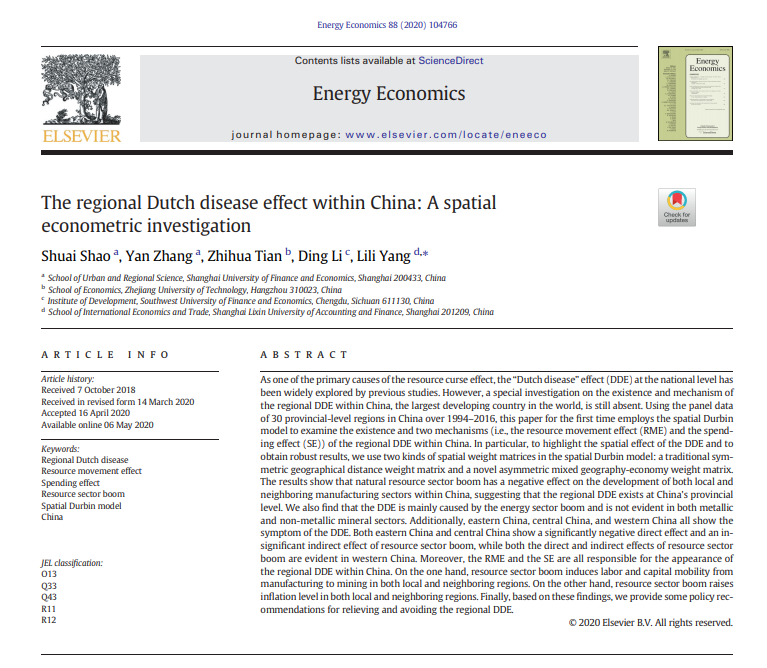
摘要:
As one of the primary causes of the resource curse effect, the “Dutch disease” effect (DDE) at the national level has been widely explored by previous studies. However, a special investigation on the existence and mechanism of the regional DDE within China, the largest developing country in the world, is still absent. Using the panel data of 30 provincial-level regions in China over 1994–2016, this paper for the first time employs the spatial Durbin model to examine the existence and two mechanisms (i.e., the resource movement effect (RME) and the spending effect (SE)) of the regional DDE within China. In particular, to highlight the spatial effect of the DDE and to obtain robust results, we use two kinds of spatial weight matrices in the spatial Durbin model: a traditional symmetric geographical distance weight matrix and a novel asymmetric mixed geography-economy weight matrix. The results show that natural resource sector boom has a negative effect on the development of both local and neighboring manufacturing sectors within China, suggesting that the regional DDE exists at China's provincial level. We also find that the DDE is mainly caused by the energy sector boom and is not evident in both metallic and non-metallic mineral sectors. Additionally, eastern China, central China, and western China all show the symptom of the DDE. Both eastern China and central China show a significantly negative direct effect and an insignificant indirect effect of resource sector boom, while both the direct and indirect effects of resource sector boom are evident in western China. Moreover, the RME and the SE are all responsible for the appearance of the regional DDE within China. On the one hand, resource sector boom induces labor and capital mobility from manufacturing to mining in both local and neighboring regions. On the other hand, resource sector boom raises inflation level in both local and neighboring regions. Finally, based on these findings, we provide some policy recommendations for relieving and avoiding the regional DDE.
文章来源:
Energy Economics 88 (2020) 104766
https://doi.org/10.1016/j.eneco.2020.104766
 扫一扫关注我们
扫一扫关注我们